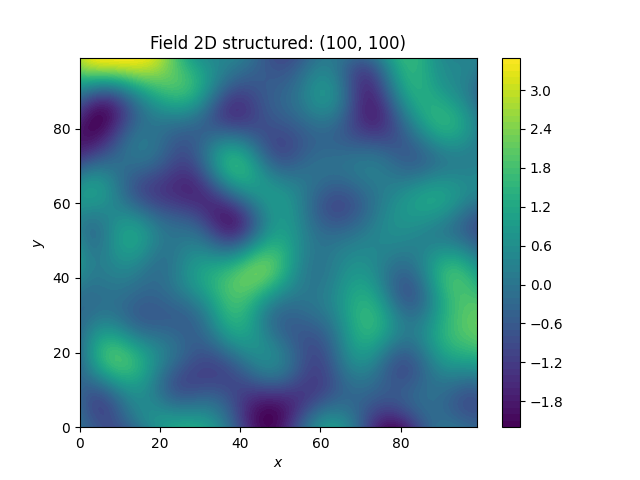Note
Go to the end to download the full example code
A Very Simple Example
We are going to start with a very simple example of a spatial random field with an isotropic Gaussian covariance model and following parameters:
variance \(\sigma^2=1\)
correlation length \(\lambda=10\)
First, we set things up and create the axes for the field. We are going to
need the SRF class for the actual generation of the spatial random field.
But SRF also needs a covariance model and we will simply take the
Gaussian model.
import gstools as gs
x = y = range(100)
Now we create the covariance model with the parameters \(\sigma^2\) and
\(\lambda\) and hand it over to SRF. By specifying a seed,
we make sure to create reproducible results:
model = gs.Gaussian(dim=2, var=1, len_scale=10)
srf = gs.SRF(model, seed=20170519)
With these simple steps, everything is ready to create our first random field. We will create the field on a structured grid (as you might have guessed from the x and y), which makes it easier to plot.
field = srf.structured([x, y])
srf.plot()

Wow, that was pretty easy!
Total running time of the script: ( 0 minutes 0.800 seconds)